Copywriting 101: 13 Must-Know Tips to Start Your Career
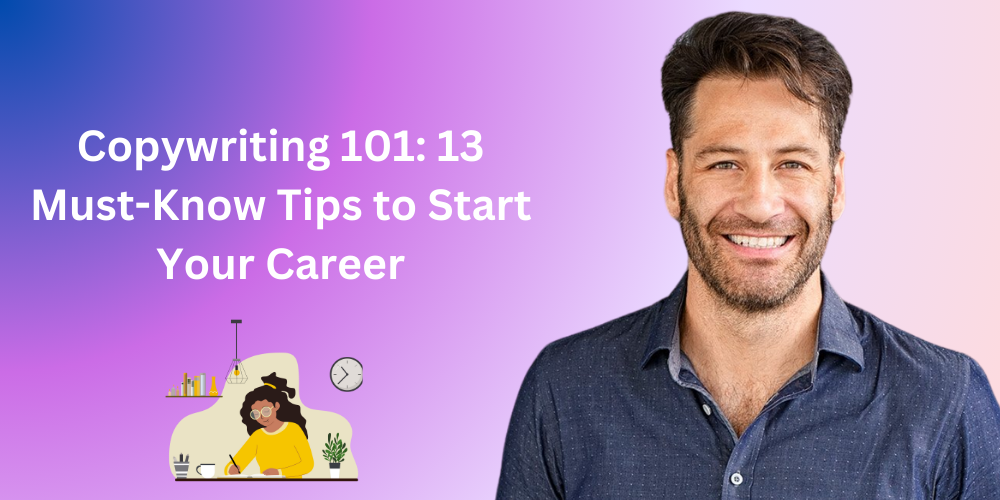
Whether you're dreaming of crafting clever ads, writing scroll-stopping social posts, or finally figuring out what the heck “conversion copy” means, you’re in the right place.
Copywriting isn’t just about sounding smart—it’s about connecting, persuading, and yes, sometimes making people click that shiny “Buy Now” button. It might seem like marketing magic, but copywriting is a learnable skill—with the right tools and a bit of practice.
In this guide, we’re breaking down 13 must-know tips to help you start your copywriting career with confidence.
What Is Copywriting?
Let’s demystify it. Copywriting is the fine art of using words to persuade people to take action. Buy a quirky mug? Subscribe to a hilarious newsletter? Donate to save llamas in Peru? That’s copywriting at work.
Think of it like this: copywriters blend psychology, storytelling, and a dash of sass to turn casual browsers into loyal customers. It’s less about writing beautifully, and more about writing effectively—because words don’t just talk. They sell.
Who Hires Copywriters?

Copywriters are the unsung heroes behind your shopping carts and bookmarked blogs. Here’s who’s hiring them like hotcakes:
- Advertising Agencies – They need your words to stick like gum on a shoe.
- Digital Marketing Firms – SEO, landing pages, and ads don’t write themselves.
- Public Relations Companies – Ever seen a press release that didn’t make you yawn? That’s skilled copy.
- Web Developers & Designers – Pretty websites need punchy words to match.
- Tech Startups & SaaS Brands – Because even robots need a sales pitch.
- E-Commerce Stores – That product description? Yep, a copywriter wrote that.
- Nonprofits & Charities – Emotional appeal = donations = good copywriting.
In short: if there's a message, a brand, or a product, there’s a need for a copywriter.
Why Copywriting Is a Must-Have Skill
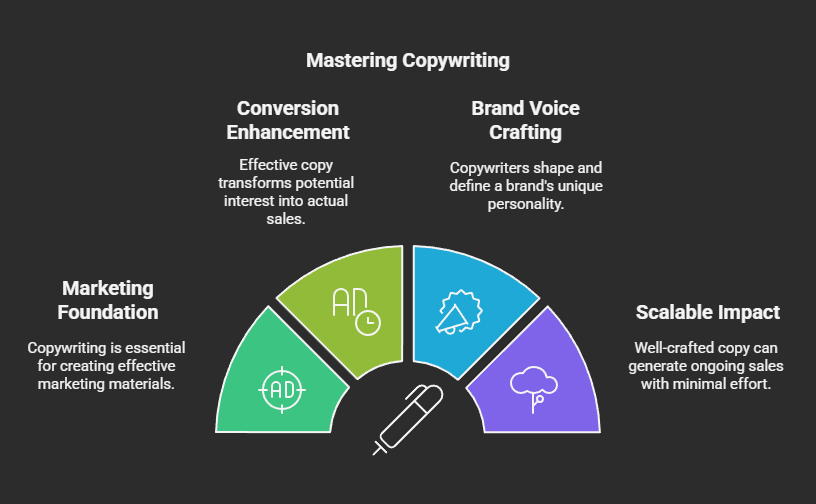
Let’s get real. In today’s swipe-scroll-skip culture, attention is the new currency. And guess who knows how to grab attention in under 5 seconds? That’s right: copywriters.
Here’s why it matters:
- It's the Heartbeat of Marketing: Your ads, emails, social posts, and websites are all powered by copy.
- Boosts Conversions Like Crazy: Great copy turns “meh” into “shut up and take my money.”
- Shapes Brand Voice & Identity: Copywriters craft your personality, not just your pitch.
- Scales Like a Boss: One solid email sequence or landing page can rake in sales for months.
🔢 Fun stat: According to the Content Marketing Institute (2024), 70% of businesses actively invest in content marketing. Why? Because words make wallets open.
Copywriting vs. Content Writing: What’s the Actual Difference?
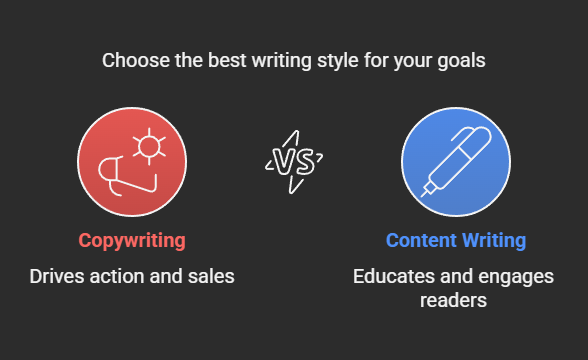
Let’s settle this once and for all—because yes, they both involve words, keyboards, and too much coffee. But they serve different purposes, and mixing them up is like using a fork to eat soup. Technically possible, but you’re missing the point.
Copywriting = Persuasion Power
Copywriting is all about driving action. It’s the flashy, fast-talking sibling that shows up at the party with a pitch and leaves with a client. Its main goal? Get people to do something—click, buy, sign up, donate, download, or smash that button.
You’ll find copywriting in:
- Attention-grabbing headlines
- Scroll-stopping Facebook & Google ads
- Revenue-pulling landing pages and sales funnels
- Bold, benefit-packed email sequences
- Catchy slogans and taglines that stick like glitter
Copywriting whispers (or yells): “Let’s make a deal!”
Content Writing = Education & Engagement
Content writing, on the other hand, is your wise, helpful friend. It’s here to teach, explain, inspire, and build long-term trust. Instead of chasing the quick sale, content writing plays the long game—nurturing readers until they’re ready to convert.
You’ll spot content writing in:
- In-depth blog posts and articles
- Step-by-step tutorials and how-to guides
- E-books and whitepapers that showcase expertise
- Engaging newsletters that inform without sounding salesy
- Detailed case studies and industry reports
Content writing says: “Hey, let’s be friends. I’ve got some cool stuff to share.”
Types of Copywriting That Pay the Bills (and Then Some)
Copywriting isn’t a one-size-fits-all gig. It’s more like an all-you-can-eat buffet—with different flavors for different appetites (and clients with wildly different goals). Whether you want to write sassy social posts or long-winded landing pages that make people hand over their credit card details, there’s a type of copywriting with your name on it.
Let’s break down the most in-demand, cash-generating flavors of copywriting goodness:
1. Ad Copywriting

Think: Short, snappy, scroll-stopping lines that punch you in the face (in a good way).
This is the world of Facebook ads, Instagram promos, Google search ads, billboards, and YouTube pre-rolls. You’ve got limited space and even less time—so every word counts. The goal? Grab attention, spark curiosity, and drive clicks.
It’s like speed dating for brands. First impression = everything.
2. Sales Page Copywriting
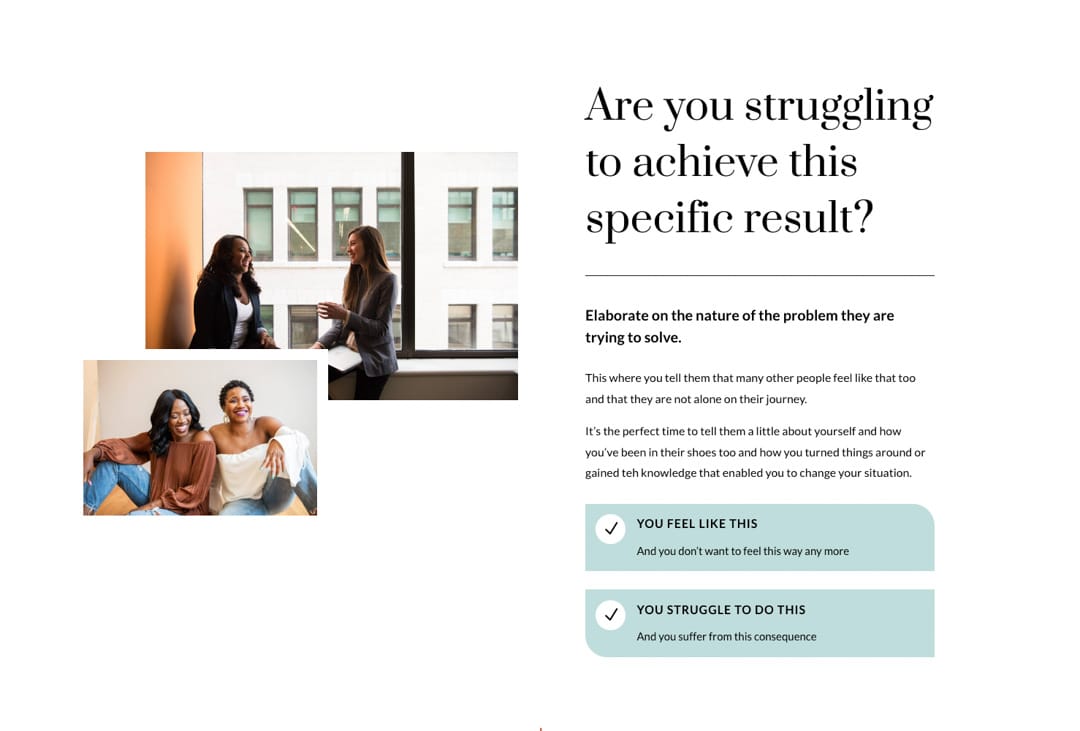
Think: Long-form persuasive writing that turns "just browsing" into "shut up and take my money."
Sales pages are the holy grail of copywriting. They combine storytelling, objection-smashing, benefit-stacking, and calls-to-action that hypnotize readers into saying yes. You’ll see these in product launches, online courses, coaching programs, and SaaS subscriptions.
It's a marathon, not a sprint—but one killer sales page can print money for months.
3. Website Copywriting
Think: Every word your visitors read when they land on a site—from homepages to About pages and everything in between.
Good website copy explains what you do, why it matters, and how people can work with you—without putting them to sleep. It’s your digital elevator pitch, brand voice, and conversion strategy rolled into one.
A beautiful website without solid copy is like a Ferrari without an engine. Pretty, but going nowhere.
4. Email Marketing Copywriting

Think: Clever subject lines, engaging intros, and calls to action that feel like texts from a smart friend.
Email copywriters know how to get into the inbox and the reader’s wallet. Whether it’s a welcome sequence, product launch, or weekly newsletter, email is where the relationship gets personal—and profitable.
Your inbox isn’t dead. It’s just waiting for the right copy to revive it.
5. SEO Copywriting
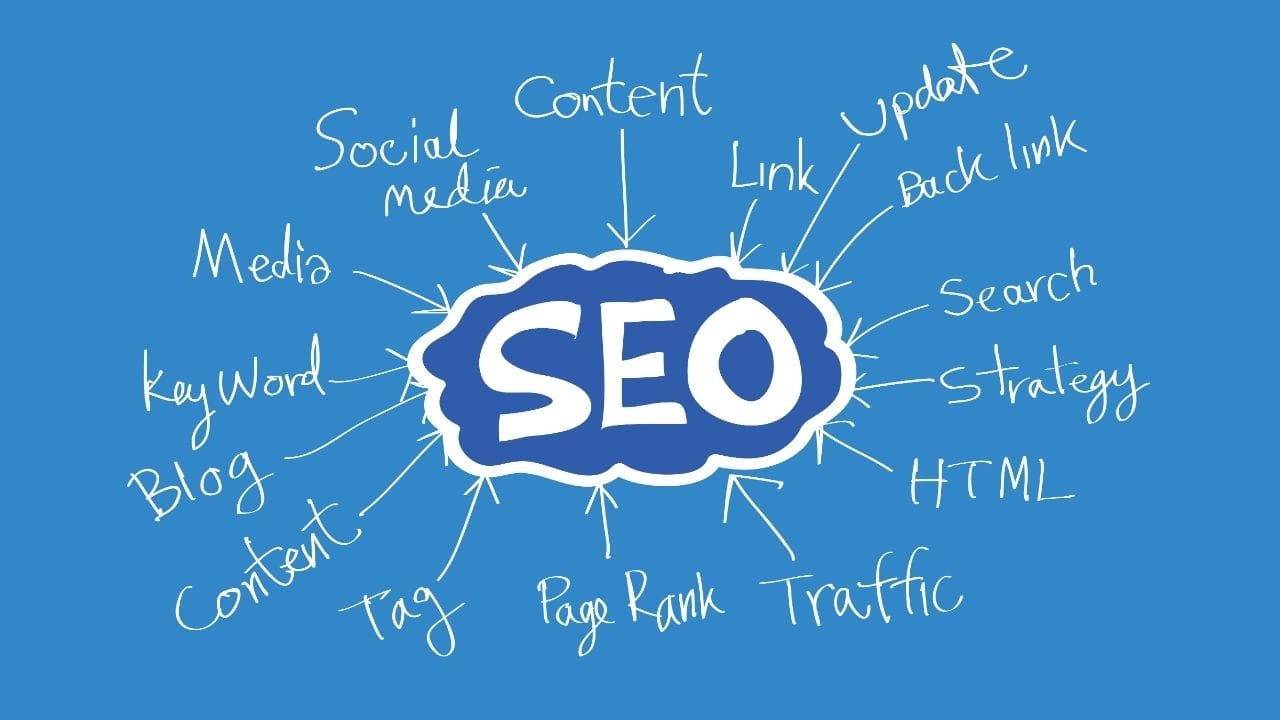
Think: Content that ranks on Google and converts humans. Yes, it’s possible.
SEO copywriters know how to weave keywords into content without sounding like a robot. It’s a balancing act between pleasing algorithms and writing stuff people actually want to read—especially on blogs, landing pages, and product descriptions.
Google likes it. Readers love it. Your traffic and sales both win.
6. Product Description Copywriting
Think: Descriptions that make even the most boring product sound like a must-have.
This is where you flex creativity in tight spaces. You're turning specs and features into benefits, personality, and sometimes pure poetry. E-commerce stores live and die by product descriptions—especially if you're selling online without in-person demos.
Because “High-Quality Plastic” doesn’t exactly scream Add to Cart.
7. Social Media Copywriting

Think: Posts, captions, tweets, and reels scripts that stop the scroll and start the convo.
You’ve got mere seconds to entertain, inform, and drive engagement. This type of copy needs to reflect the brand’s voice and the vibe of the platform—whether you’re writing for TikTok teens or LinkedIn execs.
Social media is loud. Your words need to shout without sounding salesy.
8. Video Script Copywriting
Think: Writing for talking heads, animations, and brand videos—where the words speak for themselves.
Video scripts need rhythm, personality, and flow. You're not just writing to be read—you're writing to be heard. This is key for explainer videos, YouTube content, sales videos, and even TikTok ads.
Great video script copy feels like a conversation, not a lecture.
9. Brochure & Print Copywriting

Think: Physical copy that ends up in hands, not just inboxes.
Yes, people still read brochures—especially in industries like real estate, finance, education, and events. Print copy has to be clear, visually structured, and packed with value because you’re not just battling attention spans, you're battling the recycling bin.
Old school? Maybe. Effective? Absolutely.
10. Brand Voice Development & Messaging
Think: The who and how of a brand’s communication style.
This isn’t direct response copy, but it lays the groundwork for all future writing. If you’re great at tone, personality, and consistency, helping brands craft their messaging strategy is a high-value niche.
This is the copywriter version of personal training for brands.
Where to Learn Copywriting for Free (or Pretty Cheap)
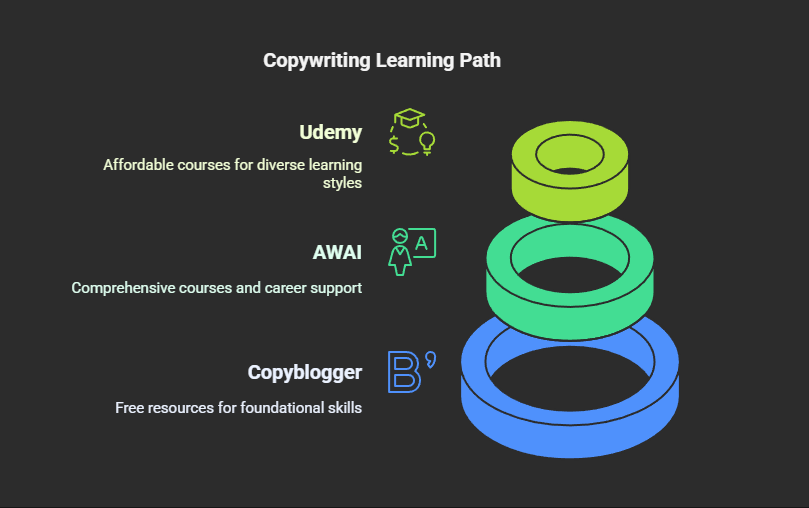
Copywriting is one of those magical skills where hustle, curiosity, and Wi-Fi can get you further than any fancy degree. And lucky for you, there are tons of budget-friendly ways to learn it—no student loans required. Are are the best platforms to learn copywriting.
- Copyblogger: The OG of Online Copywriting Education
If copywriting had a Hogwarts, Copyblogger would be it. This site has been educating marketers and writers for years and still dishes out gold.
What you’ll find:
- Free blog posts packed with actionable advice
- Free email courses (like “Copywriting 101”)
- Premium membership for deeper content (optional, but worth it)
Best for: Beginners who want to build strong fundamentals from a trusted source.
- AWAI – American Writers & Artists Institute: Career-Level Copywriting Training
AWAI is like the Harvard of copywriting (but less expensive and way more practical). If you're serious about turning this skill into a career, this is your jam.
What you’ll find:
- In-depth, step-by-step courses on various types of copywriting (email, SEO, direct response, etc.)
- Mentorship and career support
- A tight-knit community of writers and coaches
Best for: Future pro copywriters who want real-world tools and income-generating skills.
- Udemy: Affordable, Beginner-Friendly Courses for Every Learning Style
Udemy is like Netflix for skills—only instead of binging true crime, you’re learning how to write killer headlines.
What you’ll find:
- Courses starting as low as $9.99 (watch for sales!)
- Topics like SEO copywriting, email funnels, landing pages, and more
- Lifetime access, so you can learn at your own pace (even in pajamas)
Pro tip: Always read the reviews and course previews before enrolling.
Best for: Visual learners and budget-conscious beginners who love structured lessons.
📚 Books to Help You

Books = instant mentorship from the greats. Whether you're reading on a beach or during your commute, these gems are must-haves in your copy toolkit:
- 📘 The Copywriter’s Handbook by Robert Bly
Classic, no-fluff advice from a copywriting legend. Think of it as your copywriting Bible. - 📙 Everybody Writes by Ann Handley
Perfect for anyone writing online content. Witty, practical, and packed with real-world advice. - 📗 Made to Stick by Chip Heath & Dan Heath
Not a copywriting book per se, but it teaches you how to make ideas memorable—a must-have skill for any copywriter.
✍️ Blogs You’ll Binge (and Bookmark Forever)
These blogs serve piping hot copywriting tea—from techniques and templates to rants and real talk.
- Copy Hackers: The Beyoncé of copywriting blogs. Known for deep-dive posts, conversion-focused advice, and epic free webinars.
- Cult of Copy: A chaotic, brilliant Facebook group with spicy takes, bold copy, and real-world insight from practicing pros.
- The Well-Fed Writer: For freelancers who want to make serious cash without burnout. Great mix of inspiration and strategy.
Best for: Curious minds who like learning through articles, community convos, and mini-rants with actual value.
Bonus Freebies Worth Mentioning
- YouTube Channels like Alex Cattoni, Neville Medhora, and The Futur (yes, with a "u") regularly drop copywriting wisdom—free of charge.
- LinkedIn Learning: Great if you already have access through work or school.
- Podcasts: Try "Call to Action" by Unbounce or "Hot Copy Podcast" for audio inspiration on-the-go.
- Twitter/X Threads: Follow copy pros like Eddie Shleyner, Kaleigh Moore, and Nick Kolenda—they drop gold daily.
13 Expert-Backed Tips to Become a Kickass Copywriter
So, you're ready to flex your persuasive muscles and write words that make people laugh, cry, and whip out their wallets? Excellent. Think of this as your Rocky-style training montage—minus the punching meat in a freezer.
Here are 13 practical, proven, and slightly hilarious tips to help you become the kind of copywriter clients dream about (and pay handsomely for):
1. Find Your Niche (Yes, Even If It’s Frogs)

Fashion? Finance? Frogs with top hats? The riches are in the niches. Specializing helps you stand out, build authority faster, and attract clients who actually value your expertise.
Pro Tip: Pick a niche you're curious about—you'll be writing about it a lot.
2. Write Every. Single. Day.
Writing is a skill, not a magical talent bestowed by caffeine fairies. The more you write, the better (and faster) you get. Even 10 minutes a day will sharpen your brain and build your muscle memory.
Think of it as leg day for your fingers—and yes, you’ll still be sore.
3. Read Obsessively (Like, Seriously Obsessively)
Ads. Landing pages. Billboards. Cereal boxes. Instagram captions. Study what grabs your attention and why. Analyze it. Copy it by hand. Reverse-engineer the magic.
Copywriters are readers first. Bonus: it makes you wildly interesting at dinner parties.
4. Binge Copywriting Podcasts & Webinars

Podcasts and free webinars are a treasure trove of real-world tips from people who actually do this stuff for a living. Listen while walking, cleaning, or pretending to exercise.
Try:
🎧 Call to Action (Unbounce)
🎧 Hot Copy Podcast
🎧 Copy Chief Radio
You’ll be absorbing strategy while scrubbing your bathtub. Productivity win!
5. Attend Live Workshops (Yes, Even for the Snacks)
Workshops offer interactive learning, immediate feedback, and—you guessed it—networking with actual humans. Whether it’s in-person or virtual, the experience levels you up fast.
Real-time practice > endless lurking in comment sections.
6. Join Copywriter Communities
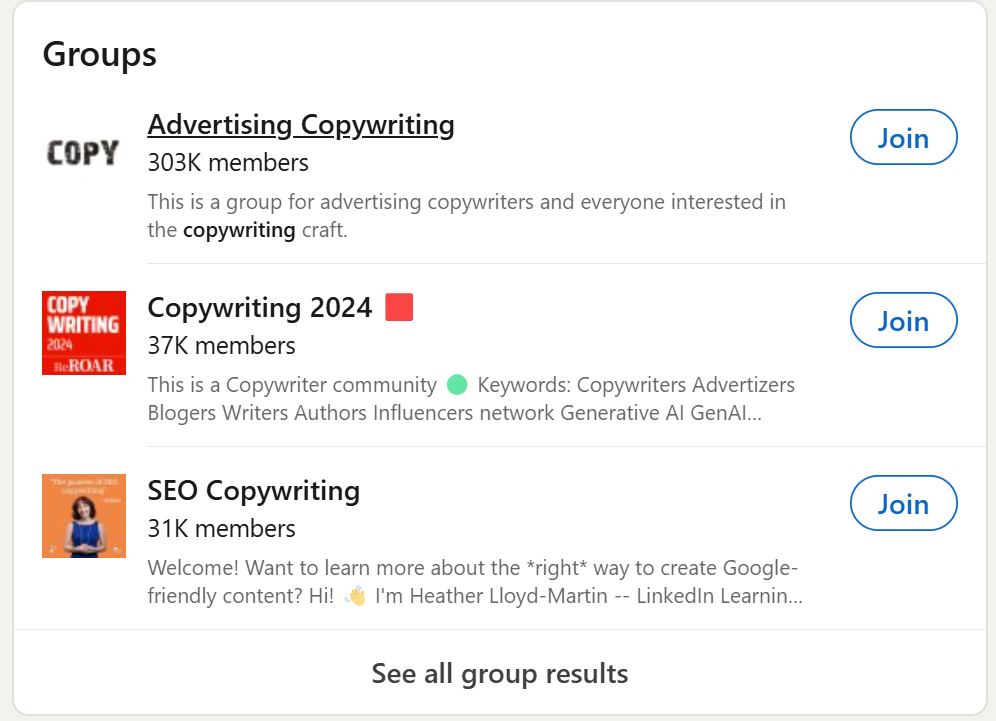
Facebook groups, Slack channels, Reddit threads, Discord servers—wherever the copy nerds gather, be there. Ask questions, share wins, post your work, get feedback.
Great places to start:
- Cult of Copy
- Copywriter Club
- Superpath
- r/copywriting (Reddit)
You’ll learn more in 30 days of community than 3 months of solo Googling.
7. Get a Mentor (Preferably One with Killer CTA Skills)
Find someone who’s already where you want to be and learn from them. Ask smart questions. Offer to help. Don't be weird. Mentors can accelerate your growth tenfold.
They’ve already made the mistakes—let them help you skip the cringe phase (or at least shorten it).
8. Freelance Your Heart Out

Freelancing isn’t just a side hustle—it’s a real-world playground. Start with small gigs, personal projects, or helping friends’ businesses. You’ll build experience, confidence, and maybe even a client roster.
Done is better than perfect. Every paid project teaches you something new.
9. Build a Portfolio That Pops
Even if you don’t have paying clients (yet), create sample pieces in your niche. Pretend you’re writing for Nike or a plant shop or a niche subscription box—whatever shows off your range and voice.
Think of it as your copywriter mixtape. Make it good enough to drop jaws.
10. Network Smart (Slide into DMs Like a Pro)
Comment on posts. Ask thoughtful questions. Share your insights. People remember names that pop up consistently and add value.
Bonus: Many clients hire writers they already follow. Be memorable—in a good way.
11. Take Targeted Courses That Don’t Break the Bank

You don’t need a $12,000 mastermind to become a great copywriter. Affordable (and often better) courses are everywhere.
Check out:
- Copyhackers' Conversion Copywriting course
- Neville Medhora’s Kopywriting Kourse
- Courses on Skillshare or Udemy
Invest in what sharpens your skill and gives you practice, not just theory.
12. Stay Trendy (Because Copywriting Evolves Like Fashion)
What worked in 2013 doesn’t fly today. Stay ahead of trends in tone, formats, platforms, and buyer psychology. TikTok? Yes. Voice search? You bet. AI tools? Absolutely.
Trendy copy doesn’t mean fluffy—it means relevant.
13. Always Be Learning (Forever and Ever, Amen)
The best copywriters are lifelong learners. Whether it’s a new framework, writing prompt, or changing consumer behavior, keep that sponge brain soaking up the good stuff.
Growth isn’t optional in copywriting—it’s the job.
Final Thoughts: Can You Really Become a Copywriter?
Heck yes, you can. Copywriting isn’t reserved for marketing majors or grammar snobs. If you’ve got curiosity, creativity, and a love for words—you’re already halfway there.
Learn the tools. Practice the craft. Embrace the cringe of your first drafts. And remember: good copy doesn’t just sell—it connects.
Pro Tip: When you're ready to automate your lead generation (and let your copy shine on autopilot), check out our friends at LeadPlay.io. They’ll hook you up with tools that work while you nap.